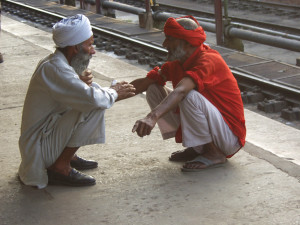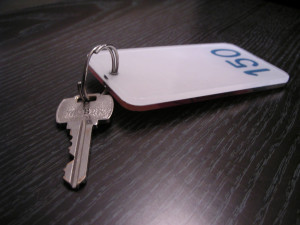Aventuras De Viaje's Blog, page 34
November 1, 2015
Bert’s Language Learning Plan
Wouldn’t it be awesome if you were able to communicate to everyone in the world. I want to so here is a language learning plan I put together.
Actually, I consider myself as an introvert and even when speaking my native tongue (English) I don’t really go out of my way to talk to people, but I still think it would be cool to be able to do so with everyone.
Obviously to do that is near on – if not completely impossible with so many languages, but I have come up with a language learning plan that I think will allow me to communicate to a pretty high percentage of the worlds population. Don’t get me wrong, I am no-where near a genius and to tell the truth, I think my retention level is well-below average.
This is very much a personal language learning plan, but I feel that the general information will be useful for like-minded individuals which is why I am posting it.
Bert’s Language Learning Plan Step One – Decide Which Languages to LearnStep one of my language learning plan is to decide which languages you want to learn and to what level you want to learn them. Here is my list and my reasoning for each.
1. English – Fluency.I am already fluent in English but I put it as the first on the list because if I was not a native speaker it would most definitely be the language on the top of my list to learn to fluency. I think there is little argument that it is the most useful language to know for world travel.
2. Spanish – Fluency.This is the only other language I want to gain fluency in for a few reasons.
* It is one of the most popular languages in the world being very widely spoken and second on the list of how many people speak it as a first language (according to wikipedia.org).
* I love South America and will probably end up living there.
* I am already at a basic level so learning it will be easier (for me) than other languages.
* It is my mother’s native tongue.
3. Chinese (Mandarin) – Conversational.Chinese has the most number of first language speakers in the world by far with 14.1% of the worlds population. The next most spoken (Spanish) is 5.85%. This figure represents all types of Chinese so the actual number of people that speak Mandarin as a first language is probably quite a bit less, however, I dare say the majority of Chinese speakers (of any dialect) that are outside of China (either travel or expatiates) and/or went to school can also speak Mandarin since it is the official language of Mainland China. Even in Hong Kong, Macau and Guangdong where Cantonese is the main language I found the majority of people understood Mandarin.
I also have a few other reasons for wanting to learn Mandarin to a conversational level as opposed to just a basic one.
* I lived and worked in China for just under three years so I have a decent head start.
* I spend a lot of time in Malaysia where Chinese is very widely spoken.
* My fathers heritage is Chinese.
* Chinese people are everywhere. I can’t think of any country I have been to where I didn’t come across at least one Chinese person. Even when I was living in a small town in Nicaragua (Matagalpa) there was a Chinese woman who ran a local store.
4. Malay – ConversationalMalay is one of the odd ones out in this list as not much of the worlds population speaks it and it is only spoken in a few places. Furthermore, most people that speak Malay can also speak English or Chinese.
The main reason I have for wanting to learn Malay to a conversational level is that I have family in Malaysia and I go there quite a lot. I get by fine with English and my basic Malay but it would be nice to be able to converse better with locals… including family.
The Last Four – BasicThese last four languages I want to learn to a Basic level meaning just enough to get by when traveling without having to look things up in a phrasebook too often. They are Arabic, Hindi, Russian and French.
Arabic is number four on the list of popularity but like Chinese this includes all the dialects. I think it will be very hard to grasp, especially the writing system. I feel that many places that predominantly speak Arabic they may not speak any of the other languages on this list.
Hindi is number five on the list of popularity. All the comments I wrote for Arabic I feel apply to Hindi also.
Russian comes in at number eight on the list of popularity and also shares the same comments I wrote for Arabic. When I went to Kyrgyzstan I started learning a little so I am already familiar with the alphabet.
French isn’t very popular in terms of the amount of primary speakers but the overall use of it is quite widespread which makes it pretty useful.
I know that trying to learn this many languages at once will cause confusion, but I feel that will be overcome with time.
All Other LanguagesWhen I know I will be going to a country where I will not be able to get by with any of the above, or I just want to learn the basics for travel purposes (politeness, haggling etc) I will just learn the very basics and use a phrase book for everything else.
* Numbers
* How much
* Please
* Thank you
* Hello
* Goodbye
* More
* Less
If the language does not use the English alphabet I get something basic of anki (see below for explanation of anki) that has audio pronunciation and just delete all the words I don’t want to learn.
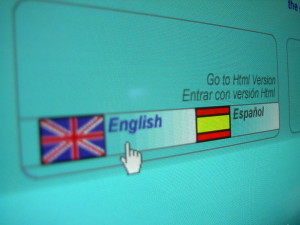
Step 1. Decide which languages you want to learn. Image courtesy of FreeImages.com
Step 2 – Download Anki FlashcardsAnki is flashcard software. Once installed you can use it without internet on your phone or pc and when used in conjunction with Ankiweb you can sync your devices. Alternatively, if you don’t want to install software you can just use it via the internet.
I like to use it on my phone because I can just pull it out when-ever waiting around.
The great thing about anki is that the anki-community has already made lots of shared decks so you don’t have to create them. Many of them are very good with most used word lists, audio pronunciation, pictures etc.
Because I like to use it on my phone I go for the smaller files.
To prevent from getting overwhelmed while still having a continuous progression I only learn one new card per language per day, but have maximum revisions.
Furthermore, I only upload a new set of cards for any particular language when I have:
a) Run out of new cards
b) Do not get any revision cards for 3 days in a row
When I upload a new deck I erase the old one. This saves memory space on my phone and also means I only have one deck for each language at a time.

Step 2. Download Anki flash card software. Available at Ankiweb.net.
Step 3 – Learn the AlphabetFor those languages that do not use the English alphabet I first learn their alphabet. Chinese is the exception because there are so many characters. I will learn them as I learn vocabulary.
I downloaded the relative alphabets with audio.
Russian – https://ankiweb.net/shared/info/3396002907
Arabic – https://ankiweb.net/shared/info/121639039
Hindi – https://ankiweb.net/shared/info/1005842297 (No audio)
The Arabic and Hindi alphabets are ridiculously hard to learn for me – I gave up on them. Now I just learn the words without bothering about trying to learn how to read for those two languages. Russian is fairly easy in comparison.
Even for those languages that use the roman alphabet (a to z) you should still learn the alphabet as some of the sounds are different, especially when combining letters. I discovered this with French.
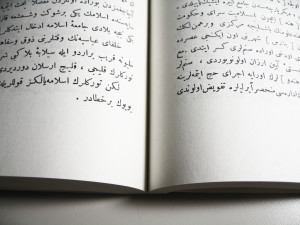
Step 3. Learn the alphabet. The Arabic alphabet is crazy hard to learn. Image courtesy of FreeImages.com
Step 4 – Basic Vocabulary with AudioI learn vocab before phases for two reasons.
a) Single words are much easier to learn than whole phrases which means I can also concentrate on correct pronunciation.
b) People are pretty intuitive and understand single word sentences so knowing full grammatically correct sentences isn’t necessary if all you need to do is get by.
I looked for the smallest files of vocab lists that also have audio. Somewhere between 100 and 500 of the most common words is good.
Spanish – https://ankiweb.net/shared/info/264662891
Chinese – https://ankiweb.net/shared/info/826536923 and https://ankiweb.net/shared/info/1276788392
Malay – https://ankiweb.net/shared/info/310248888
Arabic – https://ankiweb.net/shared/info/967835489
Hindi – https://ankiweb.net/shared/info/454628379
Russian – https://ankiweb.net/shared/info/1540956544
French – https://ankiweb.net/shared/info/33786403

Step 4. Learn basic vocabulary with audio. Image courtesy of FreeImages.com
Step 5 – Learn Common Travel PhrasesAfter learning basic vocab with correct pronunciation I will learn basic travel phrases. To save on space audio is not necessary. As I write this I am still on steps 3 and 4 so I haven’t got any links to share with you, but get everything you want at AnkiWeb.net/shared/decks
Step five is as far as I will go in this language learning plan for those languages which I only want to learn to a basic level.
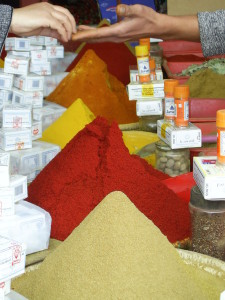
Step 5. Learn Common Travel Phrases will make it easier to buy things and ask for help. Image courtesy of FreeImages.com
For Languages I Want to Learn Beyond a Basic LevelFor languages I want to learn to a conversational level or higher I will continue to increase vocabulary, common phrases and will also study basic grammar.
I will also more actively seek out practising conversation with native speakers and may also get professional classes, especially for Spanish. Watching movies/TV, listening to music and reading material you are interested in in the desired language is also very beneficial. Basically total immersion.
Well That’s it For My Language Learning Plan. How to You Go About Learning Languages?The post Bert’s Language Learning Plan appeared first on Survive Travel.
October 26, 2015
Bert’s Method for Finding the Cheapest Flights and Accommodation
This post details the exact method I use for finding the cheapest flights and accommodation. It is very straight forward and can take less than 30 minutes to find cheap flights and accommodation.
Finding the Cheapest FlightsIf I know of a budget airline for the area I am traveling in then I check them out, e.g., Air Asia when in South East Asia.
I also go to my favorite flight comparison website.
I have tried loads of comparison sites and I know everyone has their favorite, and if you wanted you could pick a few and compare them, but I do not bother. This flight comparison website, for me, has consistently come up with the cheaper (or the same) airfares in comparison to other comparison sites (wow, I wrote comparison a lot in that paragraph!)
Also, unlike some sites, the prices don’t change once you have booked, which has happened to me a few times with other sites that claim to have the cheapest flights.
Finally, their customer service is pretty good and they send me vouchers by email. If you wanted you could book hire cars, hotels and even complete vacation packages.
Once I have found the flight I want on the flight comparison site I check it against the airlines website. Sometimes it is more expensive, sometimes its cheaper and sometimes it is the same. It’s worth doing as it doesn’t take long.
There are other things you can do like booking on certain days, clearing your cookies etc. but often I don’t bother – except booking in advance – I try to book at least two weeks in advance if I can. If you want details on other ways to save money as a traveler then check out How to Travel on a Budget by Aventuras De Viaje.
Finding the Cheapest AccommodationI compare Hostel Bookers and Hostel World. These are the two websites I highly recommend, especially for hostels, although they also do other types of accommodation.
I’m not a big room sharing person since I like to work and stuff so I always try to find the cheapest private room. Often private rooms in hostels are actually more expensive than hotels. For this reason I also compare Agoda and Booking.com. Often all four of these websites have the same property at different prices, but watch to see if they have included tax.
You can spend hours looking through all the places in your price range trying to find the perfect place but I don’t bother. Instead I just put all four lists in order of price and between them I look for the three cheapest rooms in a decent location with wifi, then I just pick the best out of those three. Often they are more or less the same so the cheapest one wins.
There are many other ways to get cheaper or even free accommodation. Again, check out How to Travel on a Budget by Aventuras De Viaje if you are interested in that.
Well that’s it. I used to spend hours looking for the cheapest flights and accommodation. With the above methods for finding the cheapest flights and accommodation I can do both in under 30 minutes, assuming I have decent internet.
What is Your Method for Finding the Cheapest Flights and Accommodation?The post Bert’s Method for Finding the Cheapest Flights and Accommodation appeared first on Survive Travel.
October 24, 2015
My Thoughts on Nichiren Daishonin Buddhism
Recently I was handed a small introduction booklet about the Buddhism of Nichiren Daishonin, so I read it. This post summarises what I learnt about Nichiren Daishonin Buddhism as well as my personal opinions – this post will probably reveal more about my personal beliefs than anything else I have written on this blog.
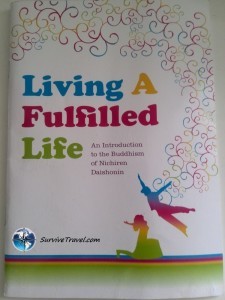
The cover of the booklet
I am not a religious person nor have I even done much research on any of them. My parents raised me as a Baha’i but I really couldn’t tell you much about it other than it is geared towards the one-ness of mankind and they follow the teachings of Bahá’u’lláh and his son Abdu’l-Bahá… and even just this little piece of information may be incorrect. I think I’m fairly well adjusted and although I am not 100% law abiding all the time, nor do I have any noteworthy compassion for my fellow man, I do my best not to hurt others.. which I think is better than most other religious people in the world.
I could keep on ranting about my personal beliefs on the general standing of mankind, but instead let’s get to the Buddhism of Nichiren Daishonin and my thoughts on that.
An Introduction to Nichiren Daishonin BuddhismWhen I read the word Buddhism I automatically thought of the movie “7 years in Tibet“, vegetarianism, the masses of Buddhist temples in Vietnam, Sri Lanka and the Happy Buddha Statue.
The Buddhism of Nichiren Daishonin is none of these.

Taken in Vietnam.
No Set RulesThe thing that kept me reading the booklet (no big feat, the whole thing took less than two hours) was the fact that there are no set rules (such as commandments) that you must follow. In Nichiren Daishonin Buddhism it is up to you to make your own moral and ethical judgements.
This one thing alone makes this religion better (for me) than others.
I do see the value in religions setting a “list of rules” for people to blindly follow. It seems to me that many of the people (not all, but many) that give themselves to these religions probably need someone to tell them what is moral or immoral to do, otherwise they would probably do all sorts of messed up stuff and think nothing of it.
I’m not suggesting that my personal moral code is better than Jesus’s (if he was even a real person) but I feel I have a pretty good grasp of right and wrong without religion – as do billions of people in China, a whole country in which the government basically banned religion. I feel safer walking the streets at night there than I do in the bible belt of the United States where Christian Nazi’s might beat the sh*t out of you, or in certain Muslim countries in the Middle-East where killing others seems to be part of the curriculum.
Anyway, let’s move on…
Buddha is in EveryoneWhere many other religeons worship an outer being (Jesus, Allah etc), the Buddhism of Nichiren Daishonin states that Buddha is in everyone. I like to translate this as Buddha being life-force, or Chi (Qi), or even “the force”, so when I look at it like that, then yes, I totally agree. We are all just energy.
A Way of Thinking – Positive ThinkingNichiren Daishonin Buddhism is really more a way of thinking than it is a religion, and the way of thinking they promote is very close to my current beliefs.
Basically the idea is that thoughts create. If you have positive thoughts, good things will happen, and if you have negative thoughts then negativity will be created – I agree with this. Nothing bad comes from positive thinking.

Photo Sourced from Twitter.
Cause and Effect – KarmaThis is probably the main idea of this (and all) forms of Buddhism and is closely related to positive thinking. Everything you do has a future effect. Negative = negative and positive = positive. Sometimes this is easy to see, e.g., commit a crime = go to jail. Many times it is not so clear.
I do believe in cause and effect, but blind faith in Karma – not so much. When seemingly bad things happen to me I don’t think “oh.. I must have done something to deserve that”. I feel it is much more productive to incorporate positive thinking into the situation. When something seemingly bad happens I think “how can I make this a good situation”. At the very least I can learn a lesson.
Also, what many people consider as “bad”, I do not. I’m really more of a “it just is” kind of person.
ChantingAccording to Nichiren Daishonin, in order to offset any bad Karma all you need to do is chant “the one essential phrase” twice a day. The longer/more you chant, the more good Karma you will create. This is the “essential phrase”:
Nam-myoho-renge-kyo
Myoho-renge-kyo is the title of the Chinese translation of the Lotus Sutra. The Lotus Sutra is the highest Buddhist teaching. Nam is Sanskrit for “devotion”. So basically you are chanting the devotion to the Lotus Sutra. The booklet also gives a more detailed translation of each of the words.
For me the chanting of this one phrase is kind of “iffy”. Luckily the booklet also states that you do not have to believe in it at first. Just do the chanting and good things will start to happen. When you see the proof, you will start to believe, and to be fair, you are not really giving anything up but your time.
Actually, to me the chanting is really just a form of meditation. I already do Yoga Nidra and I can definitely see the similarity. In Yoga Nidra you recite to yourself a Sankalpa which is a short sentence you use to “program” your subconscious. The chanting is the same idea, only they tell you what to say.
Also, chanting in a group appeals to me. Ever been in a temple when everyone is chanting? I like it.
So at the very least, chanting will help to put you in a meditative state which in turn helps to clear your mind, and if there is the chance to build good karma at the same time, then why not give it a go.
Spreading the WordThis is something I do not agree with. I don’t care what religeon you are, don’t push it on others. But I guess “spreading the word” doesn’t necessarily mean pushing it on others. It’s not like these guys are going door to door or preaching in public. Perhaps they mean just talking about your positive experience, like you would if you went to a good restaurant.
The reasoning is that you chant to build karma for yourself. You have good fortune, so why not help your fellow human beings by letting them in on the “secret”. Maybe I just don’t care about my fellow human beings enough. I’ll tell the dog, he’s always been good to me (although I am telling everyone who reads this about it…)
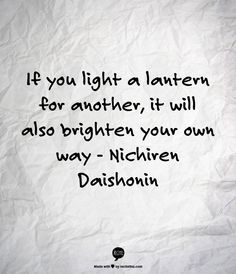
Photo Sourced From Pininterest.comsapnavnichiren-daishonin-buddhism
Ongoing LifeI am not sure if I believe this, because how can anyone really know what comes after our time on earth, but it is a nice idea. There is no heaven or hell (actually, that I do believe). Instead the vessel just dies (your body) and then your energy just kind of waits around until it is “reborn” into a new vessel – sounds pretty close to re-incarnation.
Well this post is getting kind of long so let me quickly wrap up the remainder of the information in the booklet and then give some final thoughts.
The rest of the booklet kind of just talked about concepts such as the ten worlds, the nine consciousnesses and the history of Buddhism which were interesting but nothing I felt I needed to dwell on.
It also talks about the three aspects of the practice being faith, study and practice.
Faith – The act of chanting is the faith. Have faith in the chant and chant once in the morning and once in the evening.
Study – Study the Buddhist teachings. The Buddhism of Nichiren Daishonin is not about blind faith.
Practice – Apply the teachings in your life.
Final Thoughts on Nichiren Daishonin BuddhismPersonally I believe that most religions are lies. They were invented and used (and are still used) to control others. Many of them are just elaborate businesses with awesome tax breaks. They create wars although they are supposed to create peace and often people use them as a scape-goat, like some guy murders lots of people and then says God told him to do it.
I do see the value for those that need a moral system, but I feel my personal value system does a pretty good job of that.
If I were to pick a religion the Buddhism of Nichiren Daishonin would probably be it. Overall the general concepts pretty much line up with what I already believe.
* Everything is connected and we are all just bundles of energy.
* Positive thinking.
* Cause and effect.
* No set rules.
* Meditate daily.
* Improve yourself.
I do realise, however, that just reading the small booklet and going to a couple of chant sessions probably does not really show the depth of the religion, but it is as far as I would like to delve. Any further and I might actually become religious!
The post My Thoughts on Nichiren Daishonin Buddhism appeared first on Survive Travel.
October 17, 2015
How to Cook 5 Delicious Thai Dishes
Learn how to cook 5 delicious Thai dishes by video. Learn to make Pad Thai, Suki (a Thai Noodle Soup), Tom Yum, Thai Green Curry and Penang Curry straight from local restaurant owners in Thailand.
During a brief visit to Patong Beach== in Thailand to meet up with friends we found a small outdoor “food court” one evening where the food was awesome (and cheap). We asked if they could give us some cooking lessons, and they did, and didn’t even charge us (we did give them a pretty good tip afterwards though). Each of us chose a dish and they basically just made it in front of us while telling us what they were doing.
Tom YumA sour and spicy soup loaded with healthy stuff. Good for hangovers.
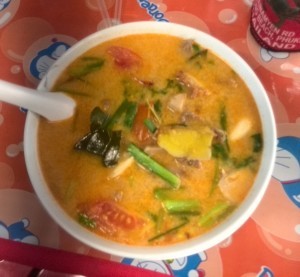
Tom Yum
SukiSuki is a Thai Noodle Soup dish packed full of healthy ingredients. A lot of good flavors going on in this dish.
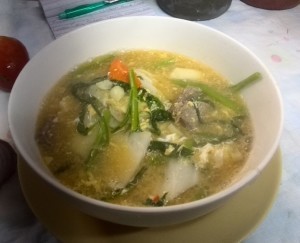
Suki
Penang CurryProbably my favorite of the Thai curries and possibly my favorite curry in the whole world… although there is lots to be tested in India when I get there in March 2016!
A classic Thai curry dish, almost as delicious as the Penang… almost.
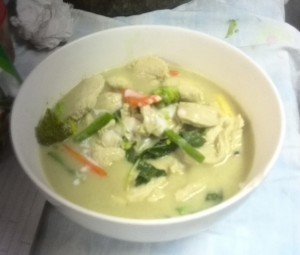
Thai Green Curry
Pad ThaiAnother classic Thai dish. This was made in a different restaurant than the other four dishes… just two doors down.
And here are all the completed dishes on the table ready for us to eat. One of my friends had already eaten half the Suki before we had finished cooking!
The restaurant peeps gave us some local fruits which they dip in salt and chilli. I think they were sour mango and pomelo.
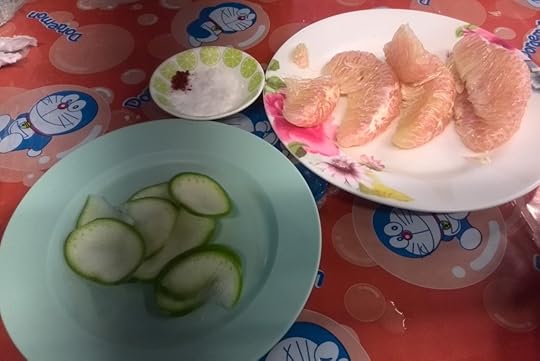
Local Fruits
What’s Your Favorite Thai Dish and Do You Know How to Cook It?The post How to Cook 5 Delicious Thai Dishes appeared first on Survive Travel.
Tanawan Phuket Hotel Review, Patong Beach, Phuket, Thailand
This is a Tanawan Phuket Hotel review in Patong Beach, Phuket, Thailand. It also includes directions, pictures and other useful information as well as some (perhaps not so useful) personal ranting.
For the short version of this review scroll to the customer reviews at the bottom of this post. The first one is from me (Bert)  .
.
I chose the Tanawan Phuket Hotel because on the map it said it was just down the road from the Graceland Phuket Resort (where my friends stayed). Either I messed up looking at the map or it is incorrect.
Tanawan Hotel Review, Patong Beach, Phuket, ThailandCost: 12.61usd / night
Address: 162/44-45, 162/88-89-90 Phung Muang Sai Kor Rd., Patong, Phuket, Thailand 83150
Apart from my mistake of being too far away from where my friends where staying the Tanawan Phuket Hotel was pretty good, especially considering the price.
The location seems out of the way but actually is pretty decent with only a 10 minute walk from the Jungceylon shopping center. Another five and you’re at Banglore Street and another five and you’re at the beach.
Right next door is a legit massage parlour with the cheapest prices I saw in Patong. Also, they hire scooters at a pretty reasonable price.
The buffet breakfast (which was free) is decent with eggs, fruit, rice, noodles, cereals, bread/toasts, coffee, tea, orange juice etc and changes some of the dishes for variety.
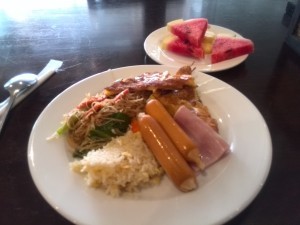
Good breakfast with eggs and fruit available – my two favourite breakfast items.
Upon check in you receive and free drink voucher and also 10% off a the restaurant.
The room is of a decent size with everything your need. Water pressure could be a bit better in the shower.

Good bed. Balcony faces another building.
You get two free bottles of water a day, fresh towels etc. and the internet is really good most of the time. Everything you would expect from any half decent hotel.

Shower pressure could be better.
I was very happy with my stay at the Tanawan Phuket Hotel and would stay again.
Book your stay at the Tanawan Phuket Hotel. Getting to the Tanawan Phuket Hotel, Patong Beach, ThailandFrom Banglore street or anywhere near there just walk away from the beach (East) and then turn right on Phang Muang Sai Kor Road. Keep walking until you see it. It’s next to a family mart.
From the airport either catch a taxi (800Baht) or a mini-bus (180Baht). Both will take you to your hotel. The mini-bus will stop halfway at a tour agency where they try to sell you tours. If you don’t want to be hassled just tell them you have been to Patong before and have already done all the tourist sightseeing last time.
To get back to the airport the Tanawan can arrange a mini-bus back but it is cheaper to get it from one of the tour booths on the street. 200 baht per person (Tanawan charges 230Baht). 800 baht for a private car.

Map of Patong Beach
Book your stay at the Tanawan Phuket Hotel.Share your Tanawan Phuket Hotel review below, or if you have any other questions, thoughts, alternatives etc., feel free to share them in the comments
The post Tanawan Phuket Hotel Review, Patong Beach, Phuket, Thailand appeared first on Survive Travel.
20 Must Try Thai Foods, Thailand
Discover 20 Must Try Thai Foods including pictures, costs and other useful information as well as some (perhaps not so useful) personal ranting.
This is a selection of Thai foods that I tried when I went to Patong Beach in Thailand. For many of these dishes I did not take a proper note of costs, but unless your eating at a resort restaurant I would not pay any more than 200Baht for any Thai dish in the Patong Beach area, and although I have never been anywhere in Thailand (yet) I feel like Patong Beach may be one of the more expensive places in the country – still pretty cheap.
1. Thai NoodlesCost: 120-160Baht
The first item on my list of must try Thai Foods is the first thing I ate in Phuket. I went for a walk along Banglor street and saw a little food court. I basically just asked for a plate of Thai Style Noodles with pork and this is what they gave me. It wasn’t quite Pad Thai but pretty similar. I liked it.
The fruit juice was also pretty good. Fresh mango and orange for 120 baht. I ended up getting alot of fruit juices and shakes during my stay in Patong Beach.
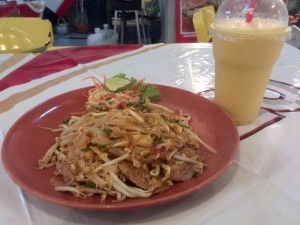
Thai Noodles – Not quite pad thai but pretty similiar and just as delicious
2. Yellow Noodle Salad Thai StyleCost: 80Baht
Raw onion and two minute Maggie style noodles. Still pretty good. 80Baht from the food court on level three in Patong Square near the Jungceylon shopping center.

Yellow Noodle Salad Thai Style
3. Penang CurryOf the different types of Thai curries, Penang Curry is probably my favorite. Not much else to say about that.. it’s delicious.

Penang Curry – my favorite Thai curry
4. Thai Green CurryThai Green Curry is maybe a tad below Panang on my “good f*kin’ curry lists” – it too is pretty spectacular.

Thai Green Curry
5. Tom Yum SoupTom Yum soup is hot and sour. I think traditionally it is with seafood, but you can also get meat or vegetarian versions, which is good for me because I’m not a big fan of seafood.
Although made differently in other places it is comparable to Suan La Tang (China) or Laksa (Malaysia / Singapore). According to my Malaysian family it is good for hangovers / motion sickness / dizziness type ailments. I tested it, it’s pretty good. Lots of herbs and stuff.

Tom Yum – Similar to Malaysian Laksa or Chinese Suan La (hot and sour).
6. Fried NoodlesPretty similar to Chinese style fried noodles. They used a thick rice noodle (He Fen in Chinese, Char Kway Teow in Malaysia). It was pretty good.

Fried Noodles
7. Pineapple RiceThis dish was pretty amazing and the presentation didn’t not-help. Has pine nuts inside it which was a pretty big winner for me.

Pineapple rice – pretty frigin good.
8. Mango Sticky RiceMango Sticky Rice is a must try Thai desert. Mango is one of my favorite fruits so having it fresh on the side was awesome. The sticky rice is sweet with condensed milk on top.

I’m not big on deserts (except ice-cream) but this was pretty good.
9. Pad See EwPad See Ew is an interesting dish. Flat rice noodle stir fry (choose what meat) on an omelette pancake. Tasted pretty good.

Pad See Ew
10. Gai Phad Med Ma MuangThe English translation of this is stir fired chicken with cashew nut. It, like all Thai food, was very tasty. There are many other stir fry dishes like this. Very similar to Chinese style dishes.

Gai Phad Med Ma Muang a.k.a. Stir Fried Chicken with Cashew Nuts
11. Pad ThaiThis is probably the most famous Thai dish in the world, and for good reason. It is absolutely mouth watering and it is hard not to order it for every meal. Also, it is usually one of the cheapest items on the menu.

Pad Thai – It’s good all around the world – its better in Thailand!
12. SatayPretty much the same as Malaysian satay. BBQ’d meat on a stick with some satay sauce.. yes please!

Satay with satsy and sweet chilli sauce. Check out the presentations.. love pineapple.
13. Street PancakesAbsolutely delicious! The one pictured below is banana and chocolate, but there are all sorts of stuff, including egg and cheese if you feel like something savoury.

All the Pancake Stall people seem to be young teenage boys.
40-50 Baht depending on the filling you choose.

Banana, Chocolate and topped with condensed milk.
14. SukiSuki is a Thai style noodle soup which uses glass noodles in a slightly spicy broth.
We found this little outdoor restaurant about a ten minute walk from the main tourist part of Patong Beach. Food was cheap and good and we even got some free cooking lessons.

Suki – A Thai style noodle soup with glass noodles.
15. Wild Boar Red CurryThis little number cost 150 Baht from the same place we got Suki. They leave the fat on which gives it a bit of crunch.

Wild Boar Red Curry
16. Ice RollKind of like Cold Rock ice-cream but they freeze condensed milk (I think). Lots of different flavors available. 80 Baht from the market across the road from the Bangla Muay Thai Stadium.
This is a soup dish with a massive amount of different flavors. I got it from some little Rasta restaruant just north of the beach front food stalls to the north of Phuket Graceland Resort.
Coconut soup broth with ginger, lemongrass, chillies and some other stuff. It tasted awesome but would have been better with a touch less spice. Cost 120 Baht.

Tom Kha Gai
18.Papaya SaladPicked this one up from a beach-front restaurant in Rawai Beach. Out of all the Thai foods I tasted this was the worst… and it was still good! Perhaps a little spicy but some good intense flavors going on.

Papaya Salad
19.Thai SweetsI picked these up for my Malaysian family so as I write this I haven’t tried them. A variety of fruit flavored candy, which I assume are made from the fruit they claim to be.
100 Baht a packet seems to be the standard price. Buy a few and get a deal.. I bought four for 350Baht but I don’t barter very hard.

Thai Sweets
20. Street FoodsThe last thing on my list of must try Thai foods is to sample the street food, and there’s lots of it to have a go at.
On my last day I discovered this guy across the road from the Graceland Phuket Resort selling noodles and rice with pork or chicken from his cart. I wish I found him earlier, I probably would have gone to him every other meal.
I got noodles and pork for 80 Baht, and that was from the beach across the road from an “expensive” resort so I’m sure you can get it cheaper.

Noodle soup from a cart guy.. better than a lot of the meals I had in pricey restaurants.
What Other Must Try Thai Foods Have Your Tried? Let Us Know in the Comments
The post 20 Must Try Thai Foods, Thailand appeared first on Survive Travel.
October 16, 2015
18 Things to do in Patong Beach, Phuket, Thailand
Discover 18 things to do in Patong Beach, Phuket, Thailand. Includes short reviews, directions, pictures and other useful information as well as some (perhaps not so useful) personal ranting.
I hadn’t planned on going to Thailand until after India about mid next year, but some good friends from Blue Star were going so I thought I’d pop over to meet them.
1. Party on Bangor StreetThe first thing on my list of things to do in Patong Beach, Phuket, Thailand is to party on Bangor Street. When the sun falls this street is definitely not for minors, although I did see parents with their young kids walking around. Perhaps they had no idea what it was going to be, but they’ll probably be answering a lot of awkward questions later.
Actually, if you just stay on the main road you won’t see anything too promiscuous, just don’t go down any side alleys or inside any building that you can’t see inside from the street. Some of the other items on this list are in Bangor Street but I felt they deserved a number on their own.. you’ll understand why when I get to them.
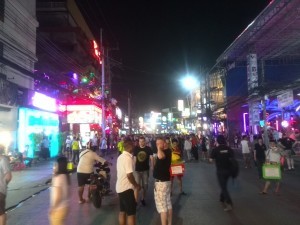
Bankor Street – Great for people watching.
2. Traditional Thai Bamboo TattooI didn’t do this but I’m guessing traditional Thai Bamboo tattoos are more painful than regular tats – and regular tats were painful enough for me.

Angelina Jolie got the co-ordinates of the birthplaces of her adopted children tattooed on her tradition bamboo thai style… or so I read.
3. Thai MassageThai massage is definitely a must do while in Patong Beach. It is like a cross between massage and the masseuse putting you in yoga poses. I really liked it but I can understand how it is not for everyone.
I would definitely not classify it as a gentle massage.
The place next to my hotel (the Tanawan Phuket Hotel) was 150Baht for 60 minutes. That was the cheapest I saw. Most places are about 200 to 300 unless you choose somewhere really flash.
4. Muay Thai CompetitionsI trained in Muay Thai when I was a teenager and am still into fighting arts so this was a must do for me, and I recommend it for all unless you are very against this type of thing.
For 1100 Baht we got to see seven matches, 3 of which ended in KO’s. These where the cheapest seats in the cheaper stadium, but included a shuttle to and from the hotel and a singlet. Since we chose the smaller stadium it means even the cheap seats were pretty close to the ring.
I got the tickets from one of the touts on the street which are actually cheaper than the advertised price on the flyers.
You get dropped off quite a bit earlier than the fights begin so you can go have dinner at the restaurant before hand. Do not order the BBQ which they cook out the front – the meat tastes weird. Everything on the menu (that we ordered) was good.
Below a video of the Muay Thai Fights in Patong Beach. It is in the smaller Patong Stadium as opposed to the Bangla Stadium which is closer to the center of town, bigger and a higher ticket price.
There are kids fighting at the start, then teenagers and then the adults. I know some people may object to kids fighting but let me just say that these guys are well trained and the bouts are very controlled. There is probably less chance of injury when training/competing in Muay Thai than there is when playing football.. and no-one seems to object to that.
“But kids shouldn’t fight”… well as an act of violence no-one should fight, but everyone should learn to protect themselves and in competition it is the same as any other sport.
5. Go to the BeachWell.. it is called Patong Beach. Jet skiing, para sailing, beach massages, food and drinks, over-priced massages (400Baht) etc… all available at the beach.

It ain’t called Patong Beach for nothing!
6. Get a Fish MassageThis can be found in many countries but since I did it here I thought I may as well include it. The general price seems to be 100Baht for 10 minutes but we came across one that was 100 Baht for 15 minutes. If you have ticklish feet this might not be for you, but after a few minutes you get used to it.
I guess the fish are eating the dead skin.
7. Get a MassageI know I already put Thai Massage on the list but this is for all the other types of massage you can get. Almost anything you want depending on the shop, and many aren’t shy about offering “extras” especially if you are not walking around with females.
If you are not into the extras thing just say no, or go into the ones that say “No Sex”. I feel like if it doesn’t say “No Sex” then they probably offer extras. The ones that do not offer extras seem to be cheaper also.
The only other massage I ended up getting besides the Thai Massage was a foot one. It was nothing like the ones is China which actually hurt. This was very pleasant. They put mild deep heat on your legs and feet and give a pretty good massage. They also do your arms and shoulders. Of course, every place is slightly different. The foot massages are usually the same price as the Thai massage… about 200Baht.
I did want to try Thai Herbal Steam massage but ran out of time on my last day, but I’ll just get one when I go to Thailand again.
8. Ping Pong ShowOh my god! This “sexy show” is the least sexiest thing I have come across, but for those that do not mind a bit of filth I recommend having at least a sample, because I doubt you can come across this so liberally anywhere else in the world.
It is a bit of a scam but only because the people that tout the shows on the street lie to you. If they just told the truth they would probably get just as many people because it is definitely something unique. The one we spoke to said it was free entry, which it was, and you have to buy at least one drink. Obviously the drinks are going to be expensive, but the girl said it was 500Baht for the first one and 99 Baht for each additional one. We did manage to get the first one for 500 Baht (after a little protesting) but additional ones were definitely not 99baht.
Also, they say the show goes for 60 minutes and you are supposed to see about 20 different things, but in reality they break up the actual show with other things. We ended up leaving after about an hour, and probably only saw 5 of the 20 things, but I’m sure if you stayed in there for four hours you’d get to see it all.
What things do you see? Well it might be a bit crude to explicitly explain it… let just say a big array of things, live and inanimate, come out of a “woman”. I put woman in “‘s because I am pretty sure the one at our show used to be a man – judging be the size of her hands and muscular definition.
Where is this? Bangla Road. You do not need to try to find it. Just go to Bangla road.
9. Spank StreetSpank Street is also on Bangla Road – well, on a side street off it (next to Freedom Street). It’s not really called spank street, we just nick-named it that because you walk down it and sexily dressed ladies spank you with a foam stick. I found it pretty entertaining. The street has many bars and strip clubs – but they aren’t like Western strip clubs… they are a bit more full-on.

The spanking is up ahead.
10. Rent a Motorized ScooterWe got ours from the Tanawan Hotel for 250 Baht for 24 hours plus 100 Baht deposit (which we got back) for each helmet. We could have got them for 200Baht down the road but thought getting them from the hotel would safeguard against any dodgy-ness.
Hiring a scooter for a day is a great way to see some of the things outside of the Patong Beach area.
We wanted to extend the rental for another 6 hours but they wanted to charge a full day.. not very good business in my opinion.
11. Big BuddhaThis is mainly famous for the view from the top, which is impressive but unfortunately has a lot of construction going on which by the looks of it will last at least a year, probably a few. Still worth going to have a look though.

Big Buddha. There was an awesome view but pictures ruined by the construction.
12. BeachesI know I have already mentioned going to the beach, but this is for the beaches outside Patong, of which there are many because Phuket is an island.

I think this is Karon Beach, but it might be further south.
13. Visit the IslandsThere are full day tours, half day tours or you can just catch the boat yourself. Visit the outer-lying islands, swim in the beaches and go snorkelling. I did none of them but would have if I had a few more days to spare.

This is the view from the Buddha on the side without the constructions. You can see isands out there right? That makes it releveant
14. Eat!Food in Thailand is AMAZING! Check out this post on Must Try Thai Foods.

Tom Kha Gai
15. Learn to Cook Thai FoodWe found a small outdoor “food court” one evening where the food was awesome (and cheap). We asked if they could give us some cooking lessons, and they did, and didn’t even charge us (we did give them a pretty good tip afterwards though).
Each of us chose a dish and they basically just made it in front of us while telling us what they were doing. We made Pad Thai, Suki (a Thai Noodle Soup), Tom Yum, Thai Green Curry and Penang Curry. I videoed each of them (badly) and put them all on a different post. Learn how to cook 5 delicious Thai dishes here.
16. Catch a ShowThese next two things I didn’t actually do.
There are a number of stage-shows you can see in Patong Beach, but unfortunately they involve tricks with animals, which I personally feel is cruel. No, I am not a vegetarian. Yes, I see the hypocrisy. I could rant on about this subject but I won’t.
There was one show that I thought would have been okay.. Siam, but I decided to have dinner and drinks with my mates instead.
17. Go to Phuket TownWe planned to do this on the day we had the scooters but ran out of daylight. You could also catch a bus there which apparently costs 30 baht and takes 30 minutes. I do not know where the bus leaves Patong Beach but it arrives at the Phuket town market. The buses leave every 30minutes from 0700 to 1800.
A taxi either way shouldn’t be more than 400Baht. Go for 250 and see.
The above information on getting to Phuket town from Patong beach was taken from WikiTravel.org/en/Phuket_Town
18. Go to Rawai TownThe last thing on my list of things to do in Patong Beach, Phuket, Thailand is to visit Rawai. Rawai is a small village just outside Patong Beach. We went there on the day we rented scooters.

The view from where we ate lunch in Rawai.
Well that’s it for this list of Things to do in Patong Beach, Phuket, Thailand. Please add or correct stuff in the comments.
The post 18 Things to do in Patong Beach, Phuket, Thailand appeared first on Survive Travel.
October 10, 2015
Phuket Graceland Resort Spa Review – Patong Beach – Phuket – Thailand
This is a Phuket Graceland Resort Spa review in Patong Beach, Phuket, Thailand. It also includes directions, pictures and other useful information as well as some (perhaps not so useful) personal ranting.
For the short version of this review scroll to the customer reviews at the bottom of this post. The first one is from me (Bert)  .
.
I didn’t actually stay at the Phuket Graceland Resort Spa (I stayed at the Tanawan Phuket Hotel) but my friends did so I went there pretty much every day. It’s a really nice resort.
Phuket Graceland Resort Spa Review – Patong Beach – Phuket – ThailandCost: From just under $60US/night if you book at the right time.
Address: 190 Thaweewong Road, Patong, Phuket, Thailand
This is a really nice resort. Three or four pools – one of which is easily 100m long, bowling alley, snooker, gym (but no sauna), bar and restaurant, a really good breakfast buffet (so I was told) and across the road from the beach.
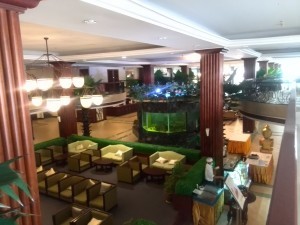
Part of the Lobby.
It takes about 10 to 15 minutes to walk from the Phuket Graceland Resort Spa to Banglore Street.
The rooms are nice too with a bath, good view (I guess this depends on you room) and everything else you would expect from a half decent hotel.
PIC OF VIEW, and In ROOMS
The grounds are big so a bit of a maze. We walked into the wrong building more than once.

Just around the grounds
Book your stay at the Phuket Graceland Resort Spa Getting to the Phuket Graceland Resort SpaFrom Banglore street or anywhere near there just walk toward the beach and then turn right. Keep walking until you see it. Its extremely hard to miss.
From the airport either catch a taxi (800Baht) or a mini-bus (180Baht). Both will take you to your hotel. The mini-bus will stop halfway at a tour agency where they try to sell you tours. If you don’t want to be hassled just tell them you have been to Patong before and have already done all the tourist sightseeing last time.

Map of Patong Beach
Book your stay at the Phuket Graceland Resort SpaShare your Phuket Graceland Resort Spa review below, or if you have any other questions, thoughts, alternatives etc., feel free to share them in the comments
The post Phuket Graceland Resort Spa Review – Patong Beach – Phuket – Thailand appeared first on Survive Travel.
September 25, 2015
A2 Singapore Parkour Review – Parkour Training in Singapore
Travel
Publications
This is an A2 Singapore Parkour review. It also includes directions, pictures and other useful information as well as some (perhaps not so useful) personal ranting.
My initial plan was to do this parkour training in January but since I could not extend my Chinese visa I decided to use the left over time that would have been spent at the Middle Kingdom Traditional Kung Fu Camp to do it.
Singapore was not my ideal setting to do Parkour training. I have been here before so there is nothing special I want to see. Also, Singapore is relatively expensive. I did try to find Parkour training in other places in Asia (cheaper options) but failed. Not that there isn’t other places, it is just thatA2 Singapore Parkour was the only one I could find on the internet with actual lessons as opposed to just a group of enthusiasts.
A2 Singapore Parkour Review – FacilitiesA2 Singapore Parkour uses a custom fitted training space which they call the Free Runners Lodge and also uses a few different places around the city of Singapore for “field” training.
Free Runner LodgeThe Free Runners Lodge is what they call their Parkour Gym. It was smaller than I imagined but a really cool setup. It gave me lots of good ideas on what kind of things I could include in the Survival Fitness Training Center. Across the way their is a small gym and a pool which they allow you to use.
They are moving to a bigger location in a month or so.
I took pictures but do not know what happened to them.. perhaps I deleted them by accident.
Field LocationsA2 Singapore Parkour makes use of three different field locations. Actually, they train where-ever but the three locations are the designated meeting points. Most of the time they train at the meeting point but sometimes they will train within walking distance. I guess it all depends on what the lesson plan is for the day.
It is nice to have a mixture of the indoor training facility and outside.
A2 Singapore Parkour Review – TrainingA2 Singapore Parkour has a pretty good training schedule with good value for money if you train regularly. A single lesson (90 minutes) costs 25sgd, which to me is not worth it, however, you can pay $200SGD for the month and come to as many classes as you want. With the ability to train six days a week it makes for a pretty good saving. If you’re female you can train seven days a week (there is a ladies class on the day in which there is no mixed class).
Alternatively, if you just want to use the Free Runners Lodge without instruction you can do so every day for $100 a month.
As already mentioned there are ladies classes and they also hold kids classes. If I had a kid I would definatlely enroll them in this.. they look like they have a lot of fun.
They also offer private classes but I think it would only be useful if you want to learn more advanced skills such as flipping etc.
Coming from the Kung Fu Course in China the training was no where near as intense but I was very happy with it. The schedule isn’t very strict so most of the time we would start and finish late. Training often went closer to two hours than the advertised 90 minutes. We could probably just keep training but by that time you get hungry. The core group of people are great people and you can always go grab dinner with them afterwards.
Although the training was fairly relaxed (in comparison to the Kung Fu Camp) it was still quite physically demanding. I always sweat up a storm.
The instructors themselves are patient, friendly and flexible. I wouldn’t say that their actual parkour skills are amazing (don’t get me wrong, they are very good, especially in comparison to me), but they are good at teaching the skills. They can explain the history to the sport and the terms used. There seemed to be a lot of “first-timers” at the classes but the lessons are handled well and the instruction is catered to the individual so if someone is more experienced or naturally better that they can do harder versions of the basic exercise.
Safety is dealt with VERY well. I think in 15+ classes I only saw one injury during training and it was just someone knocking their shin. Also, that girl (to put it nicely) was a bit more un-coordinated than the general population.
There was usually a focus, e.g., climbing or vaulting, and the progression of teaching is used well. Often he (the instructor) would be like “do this”, and then I would say “I cant do it” or “it’s too high” or some other excuse. He would break it technique and progression down and before the end of the class I would be doing it.
The instructors love parkour and it shows. They would often use the “break-time” to try new things and improve their own skills.
Basic Lesson StructureAlthough relaxed there was a basic lesson structure which is pretty generic to any physical training session.
Warm up. A basic warm up and stretch. Sometimes a jog or sometimes conditioning exercises related to the techniques we were learning that day.
Techniques. Each lesson usually focused on one to three specific techniques/skills.
Cool down. Basic cools down and stretch.
Things I LearnedOriginally I was going to give an account of what I did each lesson but since I took a number of classes some things repeated (as is the nature of training when you want to progress). Then I was going to write a list of all the things I learned but I realized that pretty much all the basics were covered… basics being fundamental parkour movements and not the more acrobatic free-running aspects.
It is probably helpful to point out that my intention was to learn the fundamentals to a level where I could continue to train myself to get better at them – and this is what I told the instructor I wanted. I was not interested in anything too “showy” that did not offer (in my opinion) any practical value, such as flips etc. but if that is the type of thing you want to learn they can definitely teach you that.
In any case, rather than write the list here, very shortly (hope fully weeks instead of months), in conjunction with Sam Fury, I will be compiling a bit of a basic Parkour Training Program (which is actually part of the bigger Survival Fitness Training Program project). When that is done I will link to it here.
A2 Singapore Parkour – HighlightsThere where a few things that stick in my mind about my time with A2 Movements.
The first one is definitely the people I met. I feel that I made some good friends and I hope to see them again one day.
In almost every class I accomplished something that I couldn’t do at the start of the class. I learned skills and overcame mental blockages (such as fear).
After my very first training session we went to the Singapore night festival and snuck up onto the rooftop of the YMCA to get a killer view of the show and the city.
On my second last lesson I overcome a few fears. One was a gap jump.. not too high but high enough that if you fell you’d get injured, and the other was scaling up onto the roof of on of the (if not the) tallest building in Singapore.

The building we climbed to the roof of from the ground. The tall one with the red light.
On my last training session I did a run. I was pretty tired as it was at the end of a training session but I feel it shows a good mix of things I learned.
A2 Singapore Parkour – Final ThoughtsMy intention was to get some basic skills so I can continue to self train. I have done basic self-training before but this really opened my eyes. I REALLY enjoyed it. I now like parkour as much as I like Jeet Kune Do (JKD) – JKD being a general term i use for Self Defense / Street Fighting.
This last five weeks has been very inspiring for me. Between the JKD training in China and the time spent with A2 Singapore Parkour I now have a new focus. I am going to create (in collaboration with Sam Fury) a Survival Fitness Training Center. I won’t go into details in this post but basically it is going to be somewhere I can go to train during my non-travel times. You can learn more about it here (link coming soon).

View from the top of the building we climbed.
Anyway, training with A2 Singapore Parkour was a great experience. I got to live like a local in Singapore, met some great people and learned some awesome new skills. I feel that I achieved my goal and will now be okay to train myself and/or join parkour enthusiasts while I’m traveling and not look like a total pleb.
Share your A2 Singapore Parkour Review in the comments, or if you have any other questions, thoughts, alternatives etc., feel free to share
The post A2 Singapore Parkour Review – Parkour Training in Singapore appeared first on Survive Travel.
September 21, 2015
Bert’s 7 Top Reasons to Live a Life of Travel
Travel
Publications
Here are my top 7 reasons to live a life of travel. These are not all the reasons, just the top ones and they are presented in no particular order. I think most people will agree with at least a few of them. They are also just good reasons for short term travel.
1. PeopleThe first of my seven top reasons to live a life of travel is other people. Actually, I do not consider myself a people’s person. In fact I prefer private rooms over shared dorms and most of the time I actively avoid talking to others. Not that I am bad with people, in fact I consider myself to be fairly good with them… I just don’t like overly lengthy conversations.
But as for the reasons why I do like people when I travel, there are three of them.
a. I get to meet new people. New cultures, languages, the way they dress etc.
b. I do not have to prolong relationships. Traveling allows me to meet and never see again if I do not want.
c. I can directly help those in need. I don’t have much money but I keep a charity fund which I can hand directly to those in need as opposed to some corporate charity. Also, the ability to help with time and effort and not just money.

1. Meeting, Leaving and Helping People.
2. FoodI love to try different foods. ‘Nuff said.
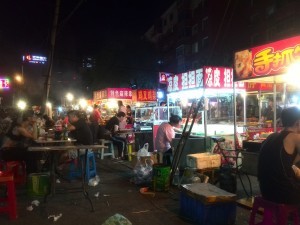
2. Trying Different Foods.
3. Problem solvingThings always go wrong when traveling (as they do in life). I like the challenge. It keeps me “sharp”.

3. It Keeps the Mind Sharp.
4. Walking AroundI like walking and when I travel I can just walk around for hours with no strict purpose.
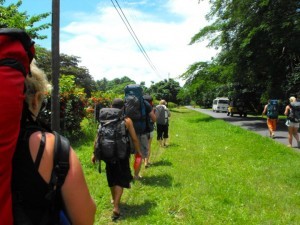
4. Walking Around and Discovering New Places.
5. The Ability to do NothingWhen actually traveling (e.g. on a train or bus) time is on your side. Sometimes I read, write, listen to music, watch movies etc. But sometimes I just sit there and do nothing. To be alone with thoughts (or lack there of). In fact I probably have my best inspiration during those times.

5. The Ability to Do Nothing.
6. It Puts the World in PerspectiveSo many people, so many cultures, so many places. Same same but different.
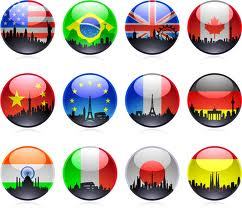
6. It Puts the World into Perspective.
7. FreedomThe last of my top reasons to live a life of travel is freedom. When traveling I have no-one to answer to. No obligations to meet. No-one is responsible for me and I am not responsible for anyone. I can do what I want when I want. Go where and when I please. Irresponsible? I don’t think so. Un-responsible (probably not a real world) would be a more accurate term.
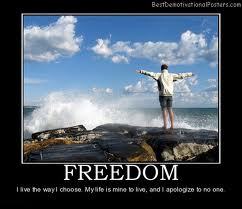
7. My favorite reason.. FREEEEEEDOM!
What are Some of Your Reasons to Live a Life of Travel – or Perhaps You Have Some Against It…The post Bert’s 7 Top Reasons to Live a Life of Travel appeared first on Survive Travel.

